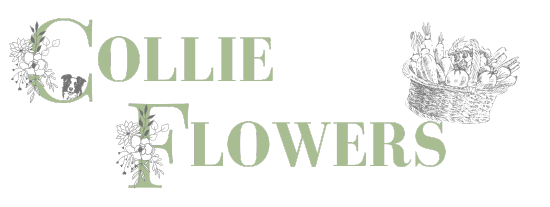Plants for Polinators
One of the biggest wildlife challenges we face isn’t an abundance of something we don’t want, but a lack of something vital!
Plants for pollinators have become ever more important as the population of pollinators has continued to decline. Pollinators like bees, butterflies, and other insects are crucial to the lifecycle of many plants, not just the flowers and vegetables we grow at home or on the allotment, but agricultural crops too.
Using scientific evidence, extensive experience and the records of gardeners and beekeepers, the Royal Horticultural Society have selected a range of year-round flowering Plants for Pollinators to tackle the decline in pollinator numbers. Only plants receiving this designation should feature the logo and seed companies, like Collie Flowers, must register with the RHS as part of our agreement to use the logo appropriately. The list is regularly reviewed by the RHS with the next update due in 2024. The current version of the list can be accessed on the RHS website.
To encourage the growth and health of pollinator populations, understanding the different flower shapes that attract different species of pollinators is incredibly important. By planting a variety of flowers with different shapes, colours, and blooms, we can help ensure that our gardens and natural areas are full of life, buzzing with activity from bees, butterflies and other pollinators that are so crucial to our ecosystem.
Providing a habitat and food source is just one of the things we can do to ensure the decline doesn’t continue. There are other steps that we can all take to help promote the health and wellbeing of pollinating insects:
- Allow lawn ‘weeds’ to flower by cutting less often
- Provide water for pollinators
- Avoid using pesticides wherever possible and never spray open flowers
- Provide nest sites for wild bees
The UK is home to a diverse range of pollinating insects, each with unique characteristics and roles in the environment. Here are my top 5 plant selection considerations to ensure your garden can provide everything our pollinators need.
Pollen: an important factor in attracting pollinators is the amount and accessibility of pollen in a flower. Bees, prefer tube-shaped flowers that provide easy access to pollen, whereas Butterflies are drawn to larger blooms which provide more nectar and pollen.
Access: some species of bees and butterflies prefer flat flowers with a broad, open surface, which allows them to easily land and access the nectar and pollen. Other species, like moths and some types of bees prefer funnel-shaped flowers that are deeper and offer more protection from the elements.
Shape: The shape of a flower determines the type of pollinator that will be attracted to it. For example, bees are attracted to flowers with tubular or trumpet-like shapes, while butterflies prefer wide, flat blooms. Other insects, like flies, are attracted to small, cone-shaped flowers that are less showy but still offer plenty of nectar and pollen.
Timing: when a plant blooms can also play a significant role in attracting pollinators. Bees and butterflies, for example, are more active during the day and are most attracted to flowers that bloom then. Moths, on the other hand, are nocturnal and are more attracted to flowers that bloom at night.
Scent & Colour: the scent and colour of a flower can also be important in attracting pollinators. Bright colours like red, orange, and yellow are often the most attractive to bees and butterflies, while moths and some species of flies are more attracted to white or pale flowers. Scent plays an important role in attracting pollinators, as the fragrant smell of a flower can signal to bees and butterflies that nectar and pollen are available.
Taking into account everything I've described so far, here are my suggestions of plants you may want to consider including in your garden to ensure that our pollinators, whatever their requirements get the access to pollen they need throughout the year.
Late winter and Spring:
- Alyssum
- Aubretia
- Currants
- English Bluebell
- Grape Hyacinth (Muscari)
- Lilac
- Longwort
- Primrose
- Sweet Violet
- Winter Aconite
- Wood Anemone
Spring into Summer
- Buddleia
- Common Mallow (Malva)
- Eryngium
- Heather
- Lady’s Bedstraw
- Lavatera (and being from where I’d from I highly recommend “Barnsley Baby”)
- Lavender
- Linaria
- Verbena
- Wallflower
Summer into Autumn
- Aster
- Colchium
- Echincea
- Honeysuckle
- Ivy
- Red Valerian
- Sedum
- Sunflower
- Tagetes (French Marigold)
I would recommend planting each plant in groups or drifts so that the colour and scent are easy for pollinators to detect.
You may also want to add herbs to the mix as they are highly attractive to insects, or design a dedicated herb garden. And think about areas of your garden that can be intentionally unkempt, a mound on nettles next to where the kids play football wouldn’t be ideal, but if you can get away with allowing some to grow in a corner that’s hardly unused, they will play host to many species of butterfly and moth.
Finally, leaving a wilder of area of the garden, featuring long-growing grasses, also provides habitat for butterflies. A small meadow area is ideal habitat for certain British butterfly species providing both nectar plants, such as oxeye daisies and knapweed, and grasses including cock’s-foot and fescues for meadow brown, large, small and Essex skippers to lay their eggs on. You can either start a meadow area from scratch, or rewild a patch of lawn over time, so why not reserve a place where you can allow grass to grow long, and see which species come to visit.
